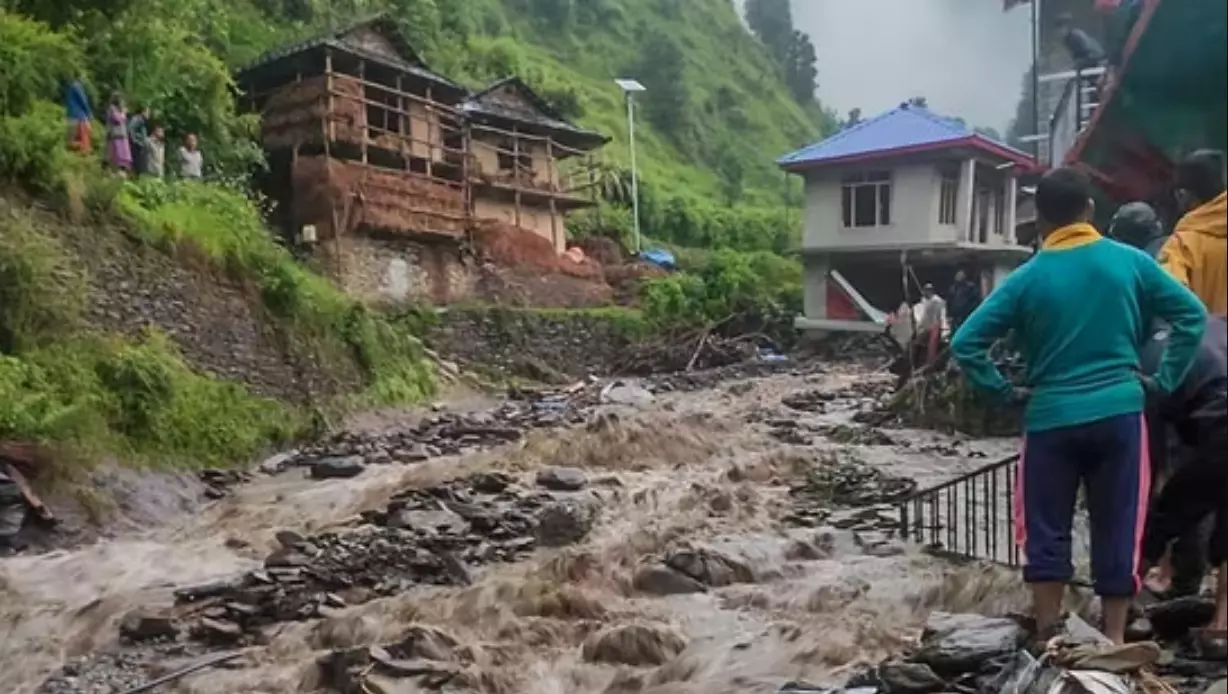Eclipsed equilibrium

As the devastating scenes of floods and landslides continue to haunt the people of Himachal Pradesh and Uttarakhand, it is undeniable that we are witnessing a distressing pattern of nature's fury. The aftermath of the recent deluge in August, following closely on the heels of July's catastrophic events, demands our urgent attention to address the underlying factors that fuel these calamities. The toll has been heart-wrenching, with more than 150 lives lost till July in the monsoon season, and an additional 35 lives claimed in August. It is high time we confront the truth — the frequency and ferocity of these natural disasters are spiralling at an alarming rate, and overlooking their root causes is no longer an option. The meteorological dynamics behind these tragedies are indeed complex, involving an interplay of different weather phenomena. The ongoing downpours are attributed to the northward shift of the monsoon trough, coupled with a western disturbance. While the development of the northern trough has been a constant imperative, India experiencing an unusual barrage of western disturbances during the monsoon season this year is quite strange. These weather anomalies are irrefutable evidence of the broader climate-related aberrations that have raised concerns globally. The Intergovernmental Panel on Climate Change (IPCC) had forewarned us about the impending calamities that climate change would unleash in the Himalayan region and India's coastal areas. Unfortunately, the said regions are living up to these predictions. While the ties between climate change and intensified natural disasters are increasingly apparent, we must also not overlook the human footprint exacerbating these crises. Anthropogenic factors play a role that cannot be dismissed. The previous floods in July laid bare three primary contributors to the destruction — the region's youthful and geologically active mountain range, unplanned infrastructure projects, and the inevitable impacts of climate change. Now, as we survey the wreckage left behind by the August flash floods, the same theme emerges — mindless infrastructure projects magnifying nature's wrath. Himachal Pradesh, once adorned with serene landscapes, has fallen victim to the rapid pace of "development" that commenced in the 1970s. The relentless drive for commercialization and tourism has transformed the very essence of these landscapes into harrowing grounds. A stark reality remains — the designated road length in the state is 1,753 km, while the actual road network has spiralled to an astonishing 40,000 km! This staggering discrepancy, among many others, underscores the reckless disregard for both climatic norms and legal regulations. The unchecked development that prioritises short-term gains over long-term ecological resilience is placing lives and the environment in a perilous position. In confronting this predicament, it is imperative that we strike a harmonious equilibrium between development and ecology. The reckless pace of expansion must yield to a more balanced approach that prioritises the preservation of our delicate ecosystems. We can no longer afford to ignore the ecological ramifications of our actions. A genuine commitment to ecological sustainability will ensure the resilience of these regions in the face of nature's unpredictable outbursts. Our collective responsibility demands that we take a pause and consider the choices we make today for the sake of tomorrow. Himachal Pradesh and Uttarakhand are emblematic of the broader global challenge, where the impacts of climate change intersect with human decisions. The tragedy unfolding on their soil reminds us that we are both the architects of progress and the custodians of our planet's future. In the face of recurrent disasters, we must heed the warning signs that nature has so vehemently presented. Let us not be blinded by short-term gains, but rather, let us embrace a holistic vision that preserves the beauty of these landscapes for generations to come. It is time to reclaim our role as protectors of the environment, to reevaluate our priorities, and to channel our collective energy towards forging a path that champions both development and the preservation of our fragile ecosystems.



